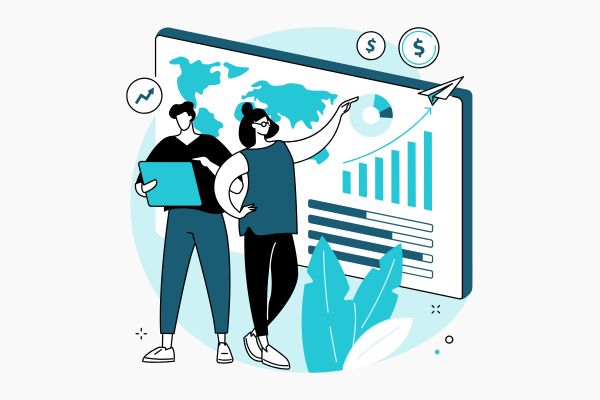

Content SEO Optimization Hacks For Content That Ranks

Content SEO Optimization Hacks For Content That Ranks
 03-03-2025 (Last modified: 21-05-2025)
03-03-2025 (Last modified: 21-05-2025)
Creating content is easy. Creating content that ranks on Google and drives traffic? That’s a different challenge. Content SEO optimization is the key to ensuring your blog posts, landing pages, and website content are seen by the right audience.
If your site isn’t appearing on the first page of search results, or your content isn’t converting, it’s time to rethink your SEO strategy. These easy tips and hacks will break down the most effective content SEO optimization techniques, helping you improve rankings, boost engagement, and increase organic traffic.

Why Content SEO Optimization Matters
Your website might have amazing content, but if search engines can’t understand it—or worse, if users don’t find it engaging—you won’t get the traffic you need. Here’s why SEO optimization for content is essential:
- Increases search rankings – Well-optimized content appears higher in search results.
- Drives organic traffic – Better rankings = more visitors, without paid ads.
- Improves user experience – SEO-friendly content is structured, easy to read, and valuable.
- Boosts conversions – The right content attracts the right audience and encourages action.
Now, let’s dive into the best practices for content SEO optimization that you can start implementing today.
1. Keyword Research: The Foundation of SEO Content
Before writing anything, you need to find the right keywords. Keyword research helps you identify what people are searching for so you can align your content with user intent.
How to Do Effective Keyword Research:
- Use tools like Google Keyword Planner, Ahrefs, or SEMrush to discover relevant keywords.
- Focus on long-tail keywords (e.g., “best content SEO optimization techniques”).
- Analyze search intent – Are users looking for information, making a purchase, or comparing options?
- Avoid keyword stuffing – Instead, naturally integrate keywords into your content.
Example: Instead of targeting “SEO tips,” go for “SEO tips for beginners in 2024.”
2. Optimize Title Tags and Meta Descriptions
Your title tag and meta description are the first things users see in search results. If they’re not compelling, users won’t click.
Best Practices for Title Tags & Meta Descriptions:
- Keep title tags under 60 characters to avoid truncation.
- Include your primary keyword naturally.
- Write meta descriptions under 160 characters with a strong call-to-action.
- Make it engaging – Your title should make people want to click.
Example:
- Bad Title: “Content SEO | Learn About SEO”
- Good Title: “Content SEO Optimization: How to Rank Higher and Drive More Traffic”
For more insights, check out our guide on On-Page SEO Strategy.

3. Structure Your Content for Readability and SEO
Google favors well-structured content that’s easy to read and navigate. Use header tags (H1, H2, H3) to break up your text.
How to Structure Content for SEO:
- Use a single H1 tag (your page title).
- Break up sections with H2s and H3s.
- Write in short paragraphs – Walls of text turn users away.
- Use bullet points and lists for scannability.
- Naturally include keywords in headers.
Example Header Structure:
- H1: Content SEO Optimization: How to Create High-Performing Content That Ranks
- H2: Why Content SEO Optimization Matters
- H2: Key Strategies for Optimizing Content for SEO
- H3: Keyword Research: The Foundation of SEO Content
- H3: Optimizing Title Tags and Meta Descriptions
- H2: Advanced SEO Techniques for Content Marketers
4. Improve Content Quality & Engagement
Google’s Helpful Content Update rewards sites that provide real value. Thin, low-quality content won’t rank, no matter how many keywords you stuff into it.
How to Improve Content Quality:
- Write for users first, search engines second – Prioritize helpfulness over keyword density.
- Answer common questions – Use tools like AnswerThePublic to find FAQs.
- Add visuals – Use images, infographics, and videos to break up text.
- Link to authoritative sources – External links to trusted sites improve credibility.
- Encourage engagement – Ask questions, invite comments, and add interactive elements.
5. Optimize for Featured Snippets
Featured snippets (the answer boxes at the top of Google) drive huge organic traffic. Getting featured means users see your content before they even scroll.
How to Optimize for Featured Snippets:
- Use question-based headings – “What is Content SEO Optimization?”
- Write concise, direct answers – Keep responses under 50 words.
- Format content correctly – Lists, tables, and step-by-step instructions work best.
- Optimize for voice search – Users ask questions differently when using voice search (e.g., “How do I improve content SEO?”).

6. Internal Linking: Keep Users on Your Site
Internal links help Google understand your content while keeping users engaged longer.
How to Use Internal Links Effectively:
- Link to relevant blog posts or pages.
- Use descriptive anchor text (not just “click here”).
- Avoid excessive links – Too many links can overwhelm readers.
- Update old content with new internal links to keep pages fresh.
Example: “For more details, check out our guide on What Is Content SEO?.”
7. Test & Optimize Content with PageTest.ai
Creating great content is only half the battle. Testing different variations helps determine what works best.
How PageTest.ai Helps with Content SEO Optimization:
- A/B test different headlines, CTAs, and layouts to improve engagement.
- Analyze content performance to see what keeps users on your page.
- Refine keyword strategies based on actual user interactions.
Case Study: A business improved its conversion rate by 23% by testing different blog post introductions with PageTest.ai.
Final Thoughts: Implement These SEO Optimization Strategies Today
Content SEO optimization isn’t just about ranking, it’s also about creating valuable, user-friendly content that converts. By implementing these techniques, you’ll drive more traffic, increase engagement, and improve search visibility.
Our Top Takeaways:
- Keyword research ensures your content aligns with user intent.
- Optimized title tags & meta descriptions increase click-through rates.
- Well-structured, engaging content keeps readers on your page longer.
- Internal linking & featured snippets boost visibility and engagement.
- Testing with PageTest.ai helps refine content for the best results.
Start optimizing your content today and watch your search rankings skyrocket!
Content SEO Optimization – Quick Answers to Common Questions
What is content SEO optimization?
Content SEO optimization is the process of improving website content so it ranks higher in search engines. It involves keyword research, structuring content with headings, improving readability, and increasing engagement through valuable, user-focused writing.
How do you choose the right keywords for content SEO?
Use tools like Google Keyword Planner or Ahrefs to:
-
Target long-tail keywords
-
Match keywords with user intent
-
Focus on terms with good search volume and low competition
Does adding more keywords help your content rank?
No. Keyword stuffing hurts SEO. Instead:
-
Use your primary keyword naturally in the title, meta description, and headers
-
Include variations and related phrases for context
-
Focus on readability and clarity
How do you optimize for featured snippets?
To win featured snippets:
-
Use question-style headers (e.g., “What is content SEO?”)
-
Provide short, direct answers (around 40–50 words)
-
Format content with lists, tables, or step-by-step instructions
Why should you test your content with PageTest.ai?
PageTest.ai helps improve content performance by:
-
A/B testing headlines, CTAs, and layouts
-
Analyzing what keeps users engaged
-
Refining content based on real user behavior and SEO results
say hello to easy Content Testing
try PageTest.AI tool for free
Start making the most of your websites traffic and optimize your content and CTAs.
Related Posts

 11-12-2025
11-12-2025
 Ian Naylor
Ian Naylor
Website Bounce Rate Calculator
Calculate your website’s bounce rate instantly with our free tool. Enter visitor data to see how your site performs and get actionable insights!

 09-12-2025
09-12-2025
 Ian Naylor
Ian Naylor
Meta Description Generator for SEO Success
Create perfect meta descriptions with our free generator! Input your keyword and content summary for SEO-friendly results in seconds.

 08-12-2025
08-12-2025
 Ian Naylor
Ian Naylor
Color Contrast Checker for Accessibility
Ensure your website is accessible with our Color Contrast Checker. Test color combos for WCAG compliance and get instant feedback!
